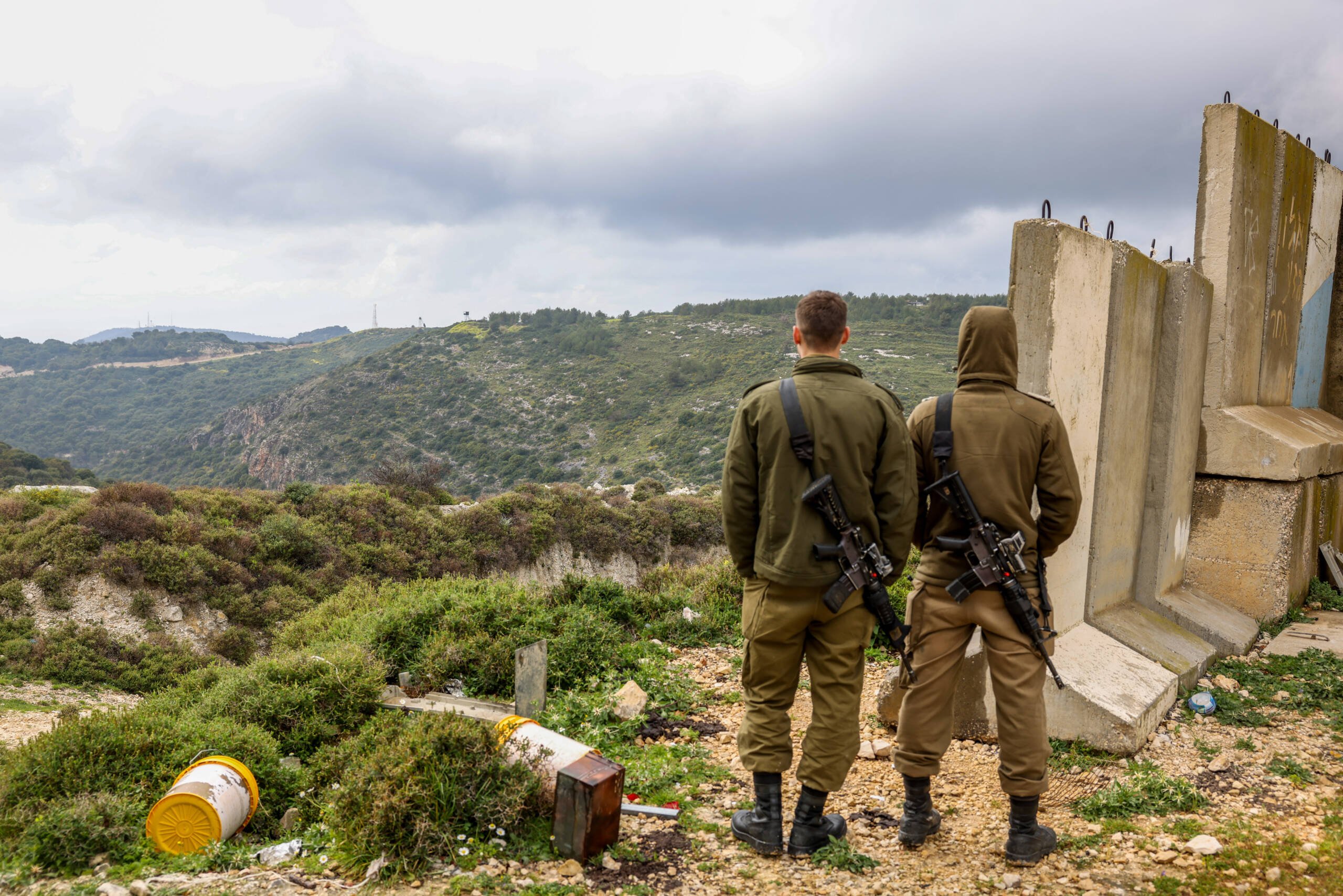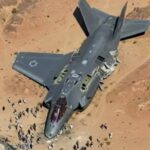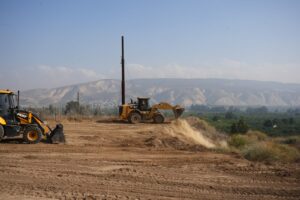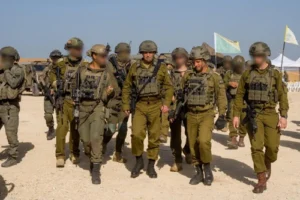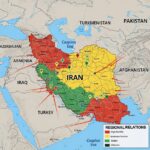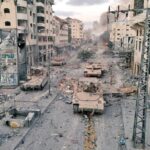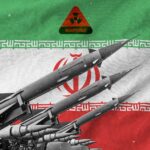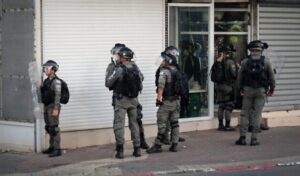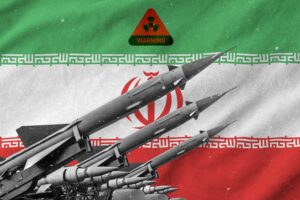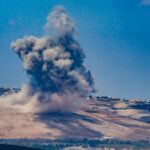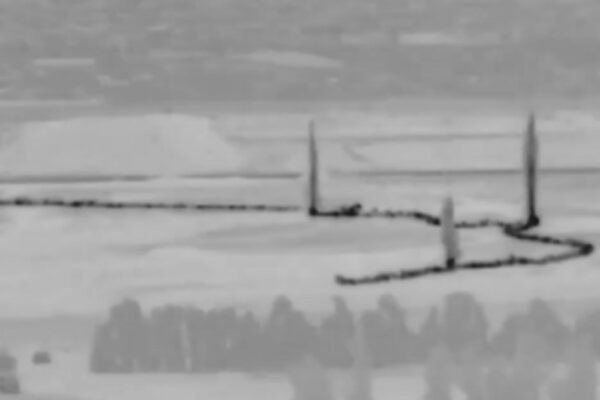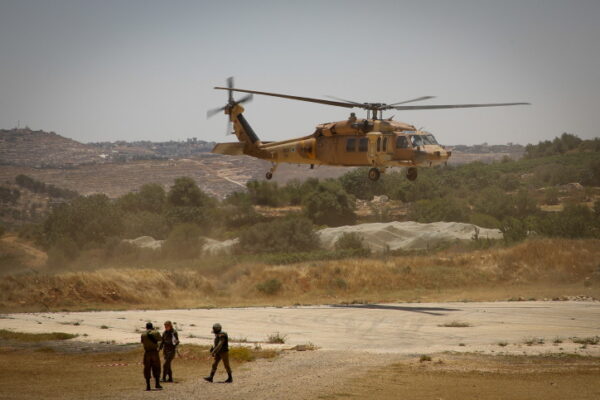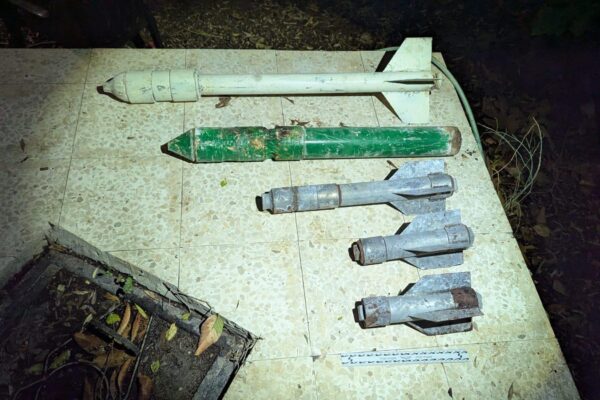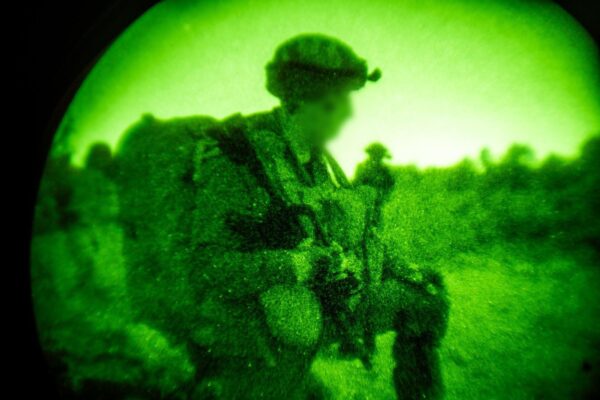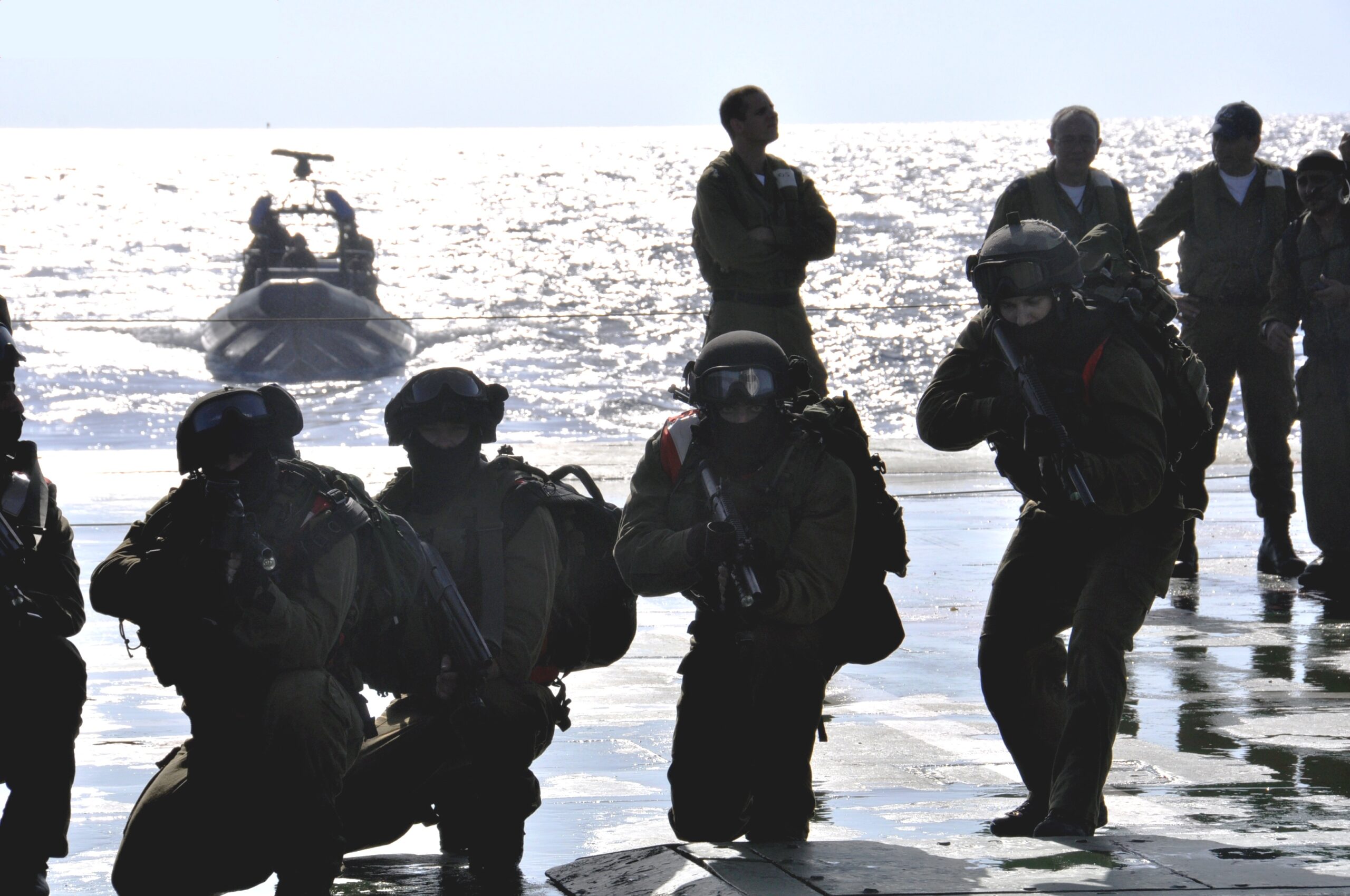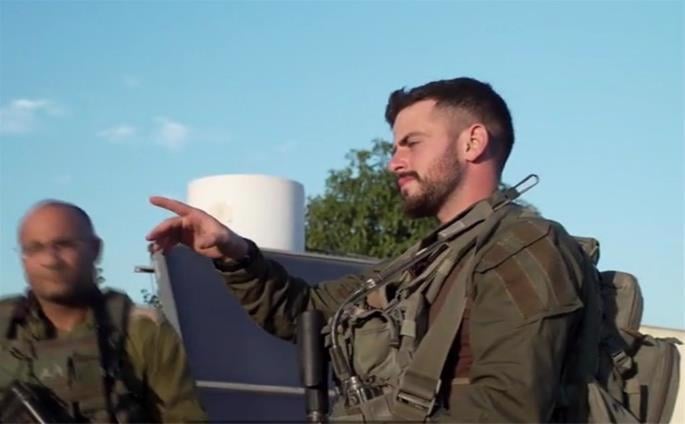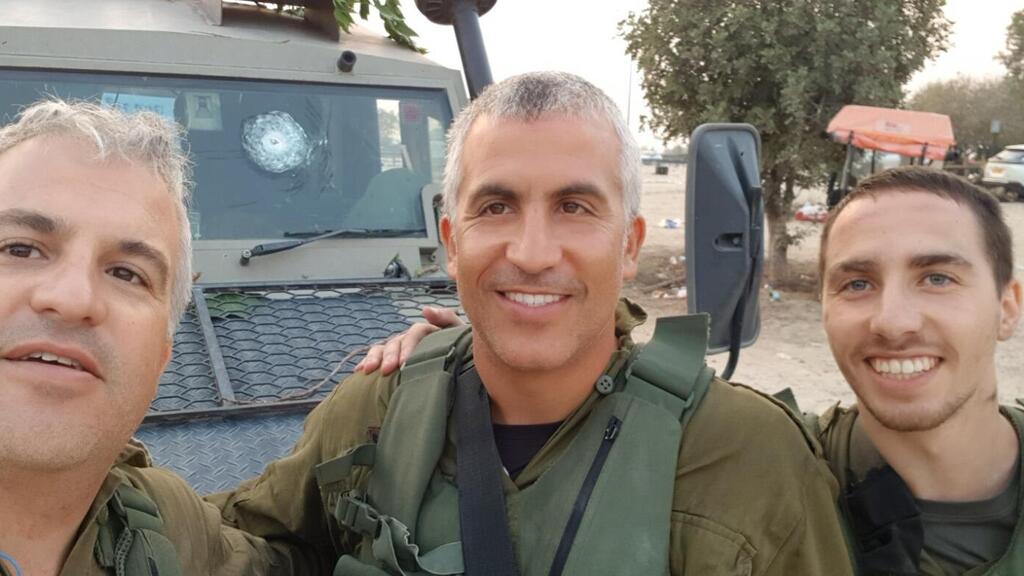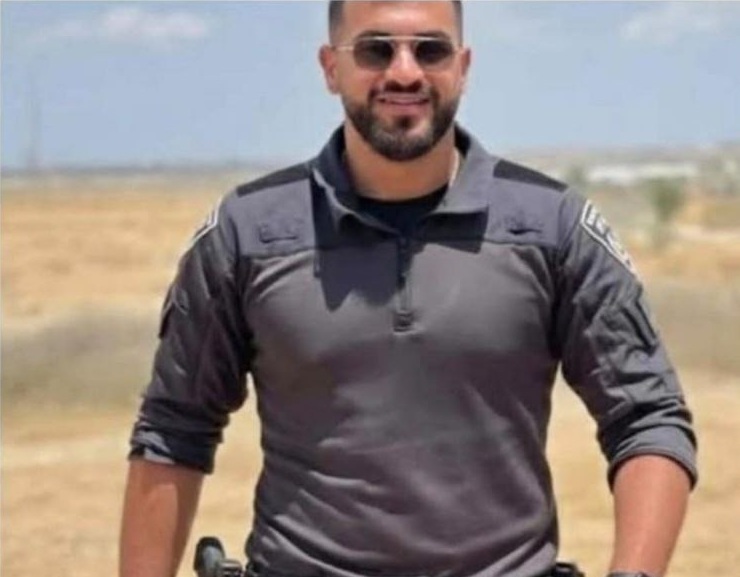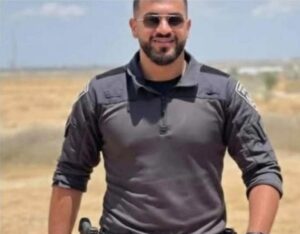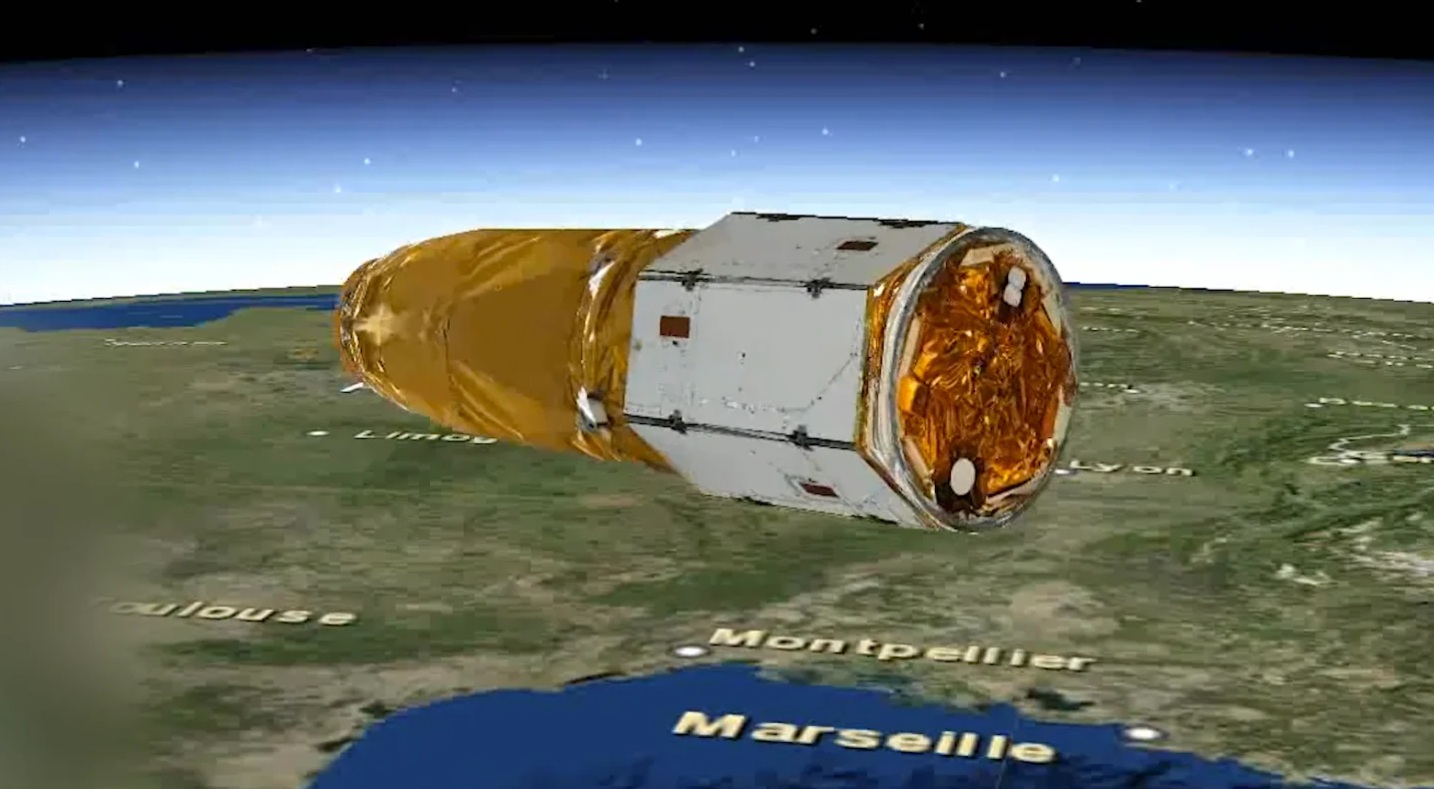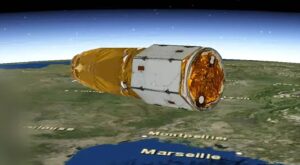The suspect, armed with a suicide vest and a rifle, was killed at a security checkpoint.
By JNS
A roadside bomb that severely wounded a motorist in northern Israel earlier this week was planted by a terrorist who infiltrated the country from Lebanon, security forces revealed on Wednesday.
The perpetrator was killed by Israeli forces while attempting to return to Lebanon, according to authorities.
The Israel Defense Forces has not yet named who it believes dispatched the terrorist, but it is not ruling out Hezbollah.
On Monday, Shareef ad-Din, 21, from the Israeli Arab town of Salem, was wounded when the explosive device detonated around 6 a.m. The bomb was planted behind a barrier by the side of the road near the Megiddo Junction, some 18 miles southeast of Haifa.
The Megiddo Junction is located 37 miles from the Lebanese border, though traveling by roads would extend the journey by a further 12.5 miles.
The initial inquiry found that the explosive device was of a design unusual to the area and not seen commonly in Judea and Samaria, said the IDF.
After the blast, the IDF, Shin Bet and Israel Police began a joint manhunt in an effort to catch the terrorist, including the establishment of roadblocks in northern Israel.
A vehicle was stopped at a checkpoint near the village of Ya’ara containing a suspect who was equipped with a suicide bomb vest and a rifle. Israeli security forces shot and killed him.
One possibility being examined is that the terrorist was driven to Megiddo from the border area; a man suspected of acting as his driver is under arrest.
Security sources believe the suspect likely planned to carry out an additional attack before possibly seeking to return to Lebanon.
Northern Israel is under normal routine, said the IDF.
Ongoing situational assessments are being held by the political echelon and the defense establishment.
“The assumption is that this man crossed the border from Lebanon, conducted the attack and tried to get back [to Lebanon],” said the IDF. It is not clear whether the suicide bomb was intended for use as a bomb or as an actual suicide vest.
Tal Beeri, head of research at the Alma Research and Education Center, which specializes in Israel’s defense challenges in the northern arenas, said, “We assess that there are two main possibilities for identifying the responsible element: Hezbollah and Hamas.
“Palestinian Islamic Jihad is a player in Lebanon but with fewer operational-military capabilities. We believe an attack like this cannot happen without, at the minimum, Hezbollah’s knowledge.
“It seems likely to us that Hezbollah is responsible for this even if Hamas was also involved. We assume that in either case, the Palestine Division of the Iranian Quds Force was updated and that the attack was coordinated with it,” Beeri said.
Whoever was behind the attack, it concluded that it could exploit the political crisis in Israel to time an attack of this kind while managing risks in regards to an Israeli response, which it assesses will be minor, said Beeri.
In January, it became public knowledge that the Iranian-backed Hezbollah terrorist organization has built more than 20 observation and guard posts along the Israel-Lebanon border over the past year, in an escalatory move.
According to U.N. Security Council Resolution 1701, which ended the 2006 Second Lebanon War between the IDF and Hezbollah, the terrorist group is forbidden to operate near the frontier.
Hezbollah launched the border post project in parallel to Israel’s construction of a fortified perimeter fence along the 140-kilometer shared border.
It became public knowledge in June that Hezbollah had built 15 outposts on the border, with each such site containing an outlook position or tower, two to three housing units and storage facilities.
“The problem is that as soon as Hezbollah builds a post like this, the Lebanese army and UNIFIL [the United Nations Interim Force in Lebanon] no longer arrive [in the area],” reports quoted a senior source from the IDF Northern Command as saying.
In recent years, concerns have also grown regarding the activities of Hamas in southern Lebanon.
Hamas cells have fired rockets into Israel in past years, including during May 2021’s Operation Guardian of the Walls war between Israel and Hamas and Islamic Jihad in the Gaza Strip.
In April 2022, a senior Hamas source warned that should another war erupt between it and Israel, “a front will also be opened from southern Lebanon, and there will be an ‘intifada of 1948 Arabs [Arab Israeli citizens],” according to a report on Sunday by the London-based Rai Al-Youm newspaper.
The report, translated into Hebrew by Kan News, cited the Hamas source as warning that the situation in Gaza and “the rest of Israel” could ignite at any minute, despite understandings reached between Israel and Hamas via Egyptian mediation that have produced a year of quiet since the Operation Guardian of the Walls.
The Israeli Defense Ministry revealed on Tuesday that several high-level situational assessments had been held over the past 36 hours regarding unspecified “security incidents.”
According to a statement from Defense Minister Yoav Gallant’s office, Gallant instructed those present at the meetings, including IDF Chief of Staff Lt. Gen Herzi Halevi and Shin Bet director Ronen Bar, to “continue efforts to ensure the daily routine of Israeli citizens.”
On Wednesday, Gallant briefed Israeli Prime Minister Benjamin Netanyahu on the security developments, ahead of the latter’s departure for a diplomatic visit to Germany.
Netanyahu’s office announced shortly thereafter that the premier would be returning from Berlin on Thursday evening and not on Friday morning as originally scheduled.


